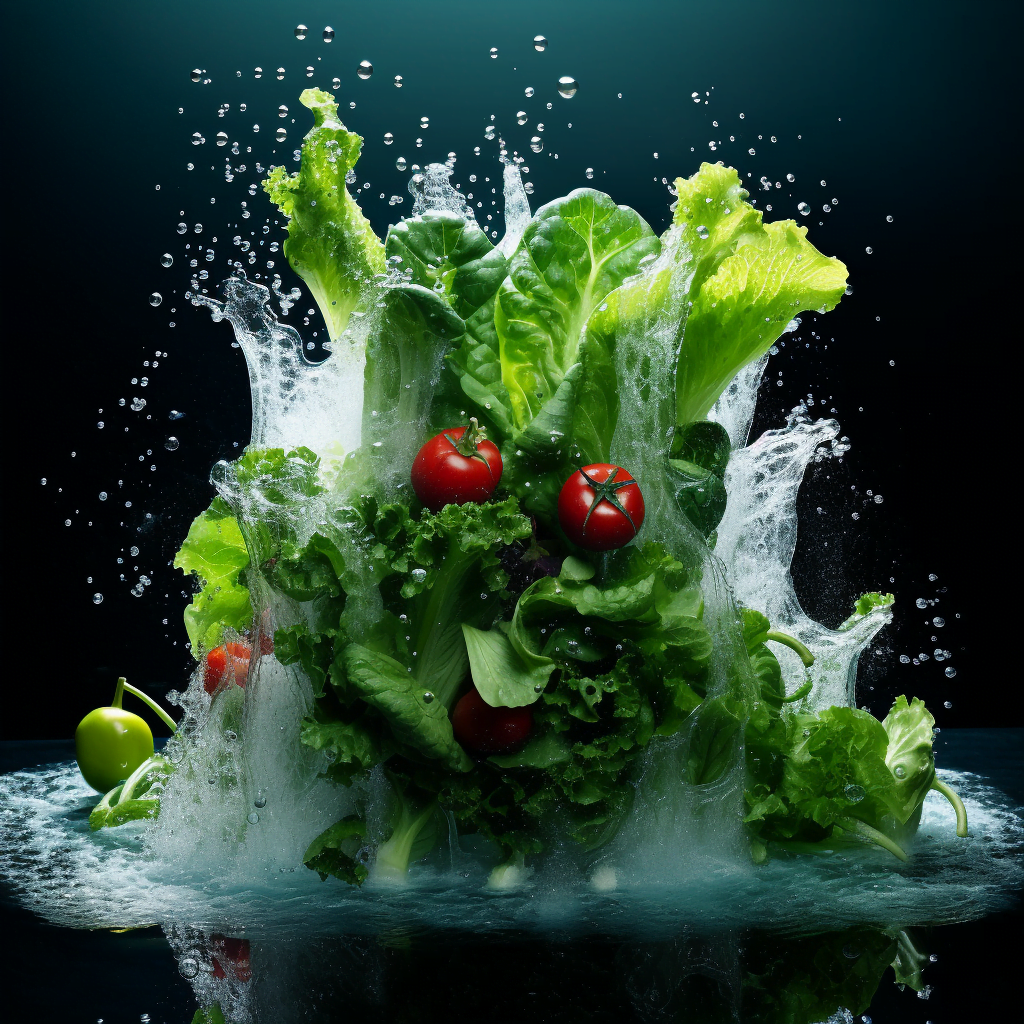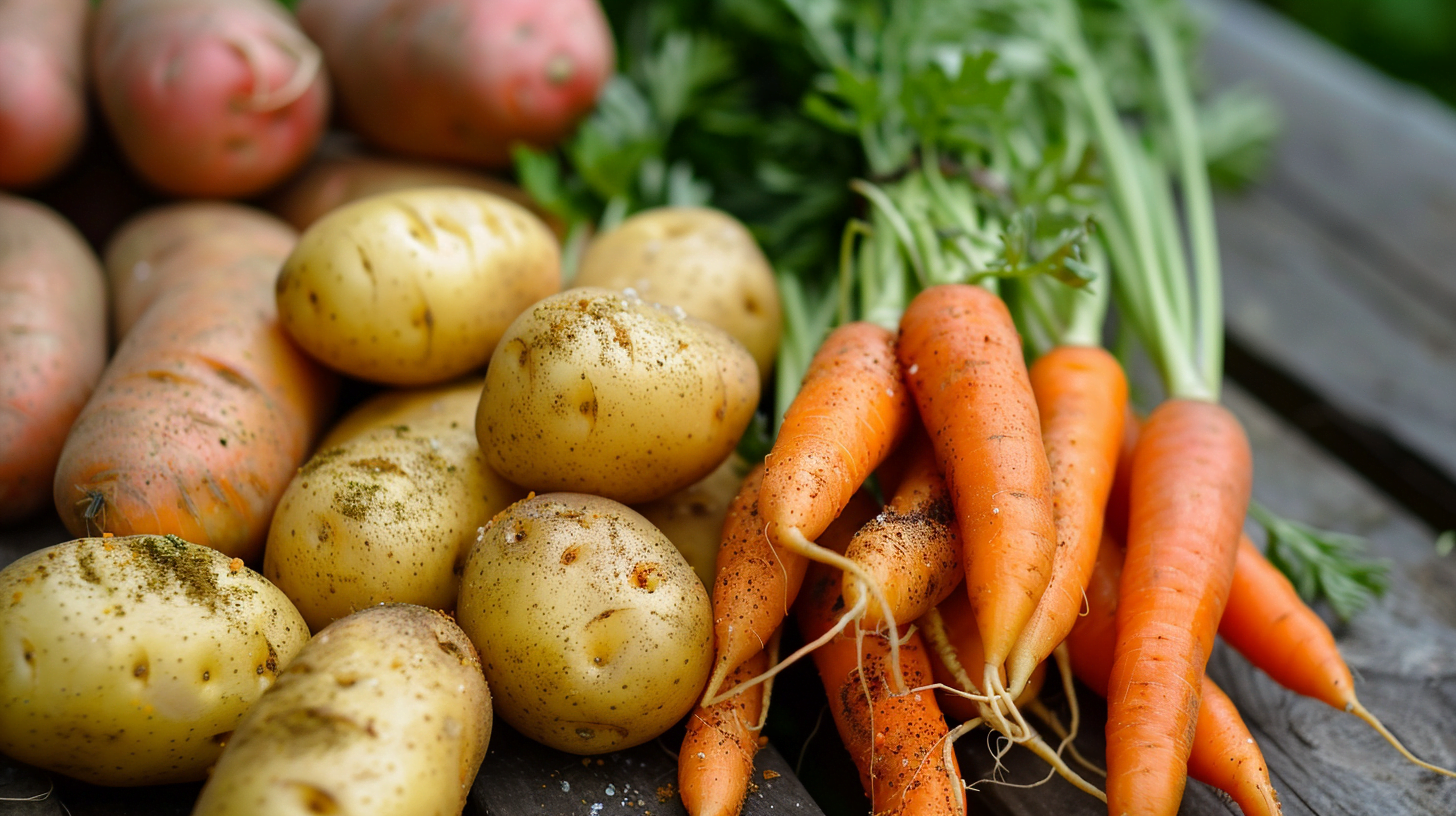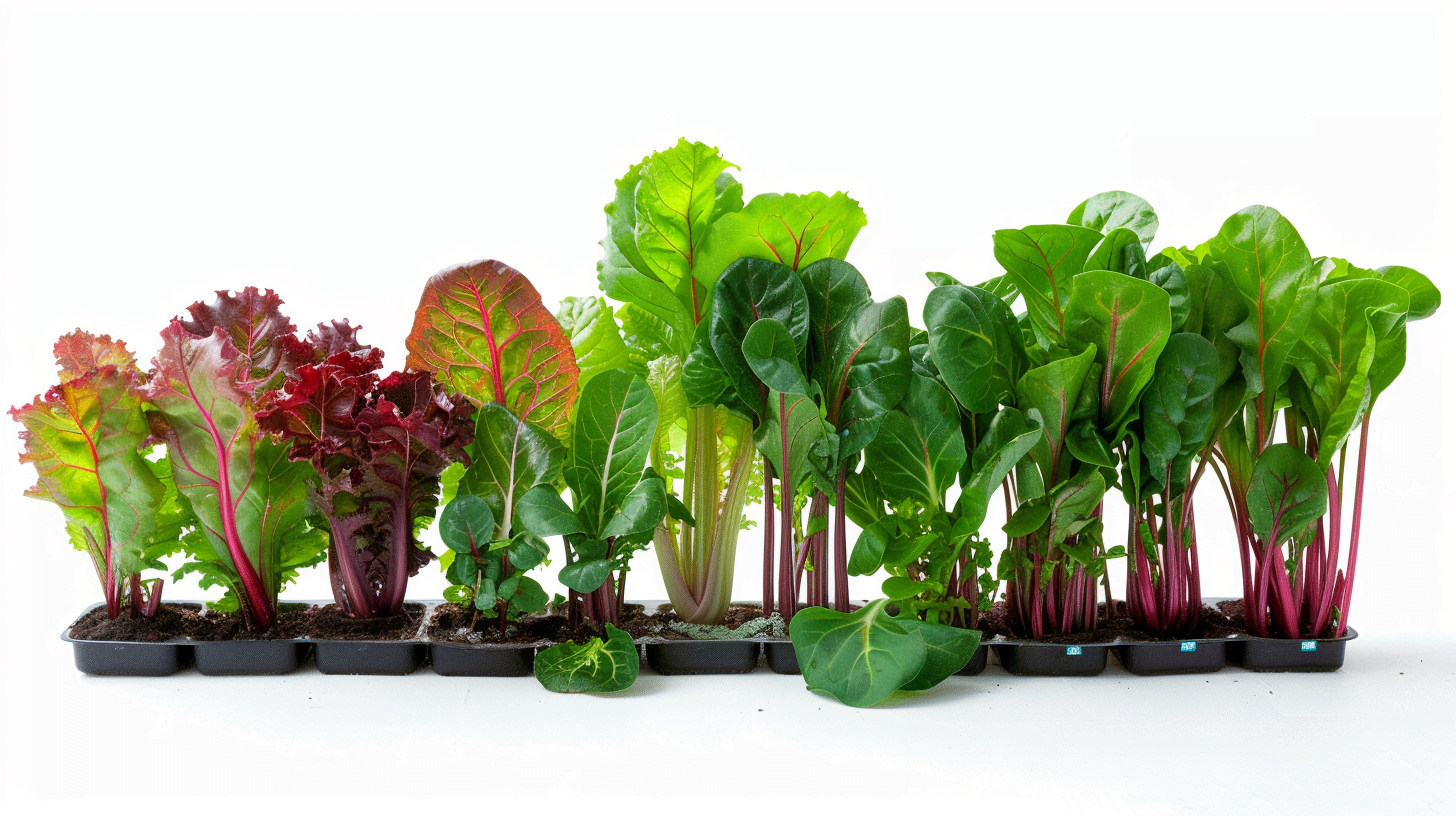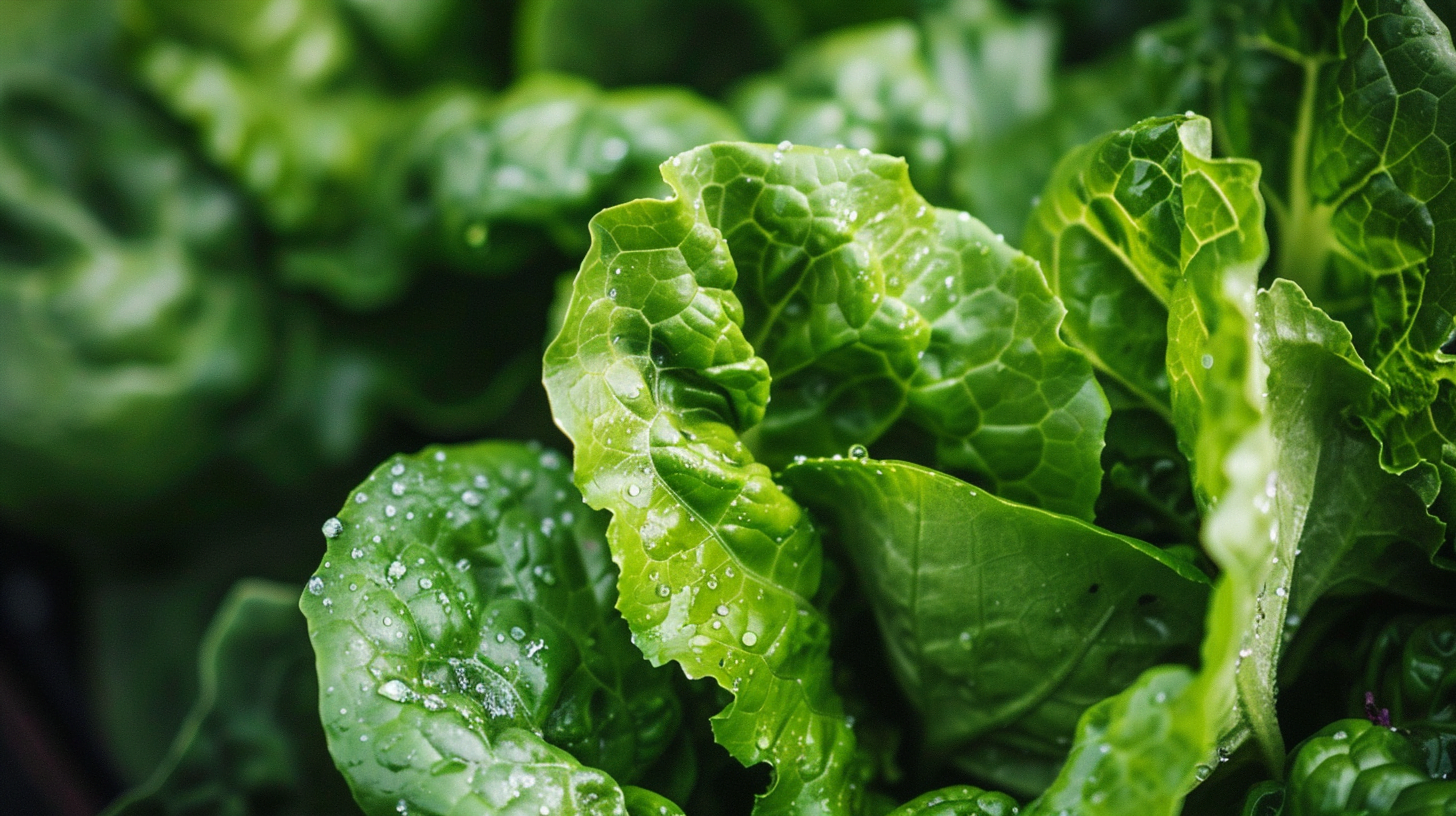Introduction
Welcome to the fascinating world of soil-less agriculture! In this comprehensive guide, we delve into answering the question, ‘What Is Hydroponically Grown Vegetables?’ Hydroponics, an innovative and sustainable method of farming, has revolutionized the way we grow our food. By bypassing traditional soil-based cultivation, this technique uses nutrient-rich water solutions to nurture plants, offering numerous advantages over conventional methods. From ancient times to modern high-tech greenhouses, hydroponic farming has a rich history and an even more promising future. Join us as we explore the intricacies of hydroponic systems, their benefits, and the impact they have on our daily consumption of vegetables. Whether you’re a commercial grower, a hobbyist, or simply curious about this green technology, this article will provide you with a thorough understanding of hydroponically grown vegetables, their cultivation methods, and their significance in today’s world.
What are Hydroponically Grown Vegetables?
Hydroponics is the method of growing plants without soil, using mineral nutrient solutions in a water solvent. The idea for hydroponics has been around since the ancient Aztecs, but the technology has come a long way. Today, hydroponics is used for large-scale farming as well as small home DIY systems.
In hydroponics, the mineral nutrients that plants need are dissolved into water and then delivered to the plant roots. This provides a highly controlled way to give plants exactly what they need for optimal growth. There are several main types of hydroponic systems:
- Wick system – plant roots are suspended in a nutrient reservoir and a wick carries the solution up to the roots
- Deep water culture – plant roots hang directly into a reservoir of nutrient solution
- Ebb and flow – plants are periodically flooded with nutrient solution then allowed to drain
- Drip system – nutrient solution is dripped onto plant roots via dripper lines
- N.F.T. (nutrient film technique) – a thin film of nutrient solution runs over the roots
There are also fully automated hydroponic systems controlled by computers and timers to optimize conditions. NASA has even used hydroponics to grow food for astronauts in space!
A Brief History of Hydroponics
The idea of growing plants without soil has been around for millennia. The ancient Aztecs constructed sophisticated floating gardens known as “chinampas” to grow crops in Lake Tenochtitlan. In 1627, English scientist Francis Bacon hypothesized that plants might grow faster if their roots were immersed directly in nutrient solutions.
In 1929, Dr. William Frederick Gericke of the University of California at Berkeley coined the term “hydroponics” from the Greek words for water (“hydro”) and work (“ponos”). His research on tomato and other crop yields helped establish the viability of hydroponics for agriculture.
In 1937, a “Nutrient Film Technique” was developed in England, demonstrating that plants could be grown in a thin film of nutrient solution. This discovery kicked off the commercial use of hydroponics.
Since then, hydroponic farming has steadily grown in use. The development of inexpensive plastic growing trays, PVC pipes, and nutrient mixes made hydroponics practical for more growers. Today it is a billion dollar industry producing food for consumers worldwide.
Major Types of Hydroponic Systems
There are 5 major types of hydroponic systems used for growing vegetables and other crops:
Wick Systems
This is one of the simplest hydroponic methods. With wick systems, the plant roots are suspended above a reservoir of nutrient solution. An absorbent wick (typically cotton rope) leads from the reservoir up to the plant roots. The wick soaks up the solution and delivers it to the roots. Growers need to monitor and refill the reservoir regularly.
Wick systems work well for smaller plants and require no electricity. They are a good choice for beginner DIY hydroponic gardeners.
Deep Water Culture (DWC)
Also called the “floating system”, deep water culture involves suspending plants above a large reservoir of oxygenated nutrient solution. The roots dangle down directly into the solution. An air pump delivers a constant supply of oxygen and keeps the water circulating to prevent stagnation.
DWC systems give an immediate source of water and nutrients. Growth rates can be very rapid. However, they require more effort to monitor oxygen levels and pH.
Ebb and Flow (Flood and Drain)
Ebb and flow systems periodically flood the grow tray with nutrient solution and then drain. A submersible pump in the reservoir pushes solution to the tray, flooding the base. Once flooded, gravity drains the solution back down.
These flood and drain cycles happen 2-6 times per day. The periods of being flooded versus drained are customized to the plants. Ebb and flow systems are versatile and work for various setups.
Drip Systems
In drip hydroponics, nutrient solution is delivered directly to the base of each plant via drip lines and emitters. Pumps in the reservoir push the solution through spaghetti tubes or irrigation lines with pre-spaced emitters that drip feed each plant.
Drip hydroponics takes more equipment and setup but gives precise control over feeding. It’s common in commercial greenhouses but also works for home use. Lines need occasional flushing to prevent emitter clogs.
NFT – Nutrient Film Technique
Nutrient film technique (NFT) involves a shallow stream of nutrient solution constantly flowing through angled grow pipes. Plant roots dangle down into the moving stream. Only a very thin film of 1-3mm flows over the roots.
NFT systems don’t provide the plants with much of a water reserve. If the pump fails or power goes out, roots begin drying rapidly. Therefore, backup pumps are critical for NFT systems.
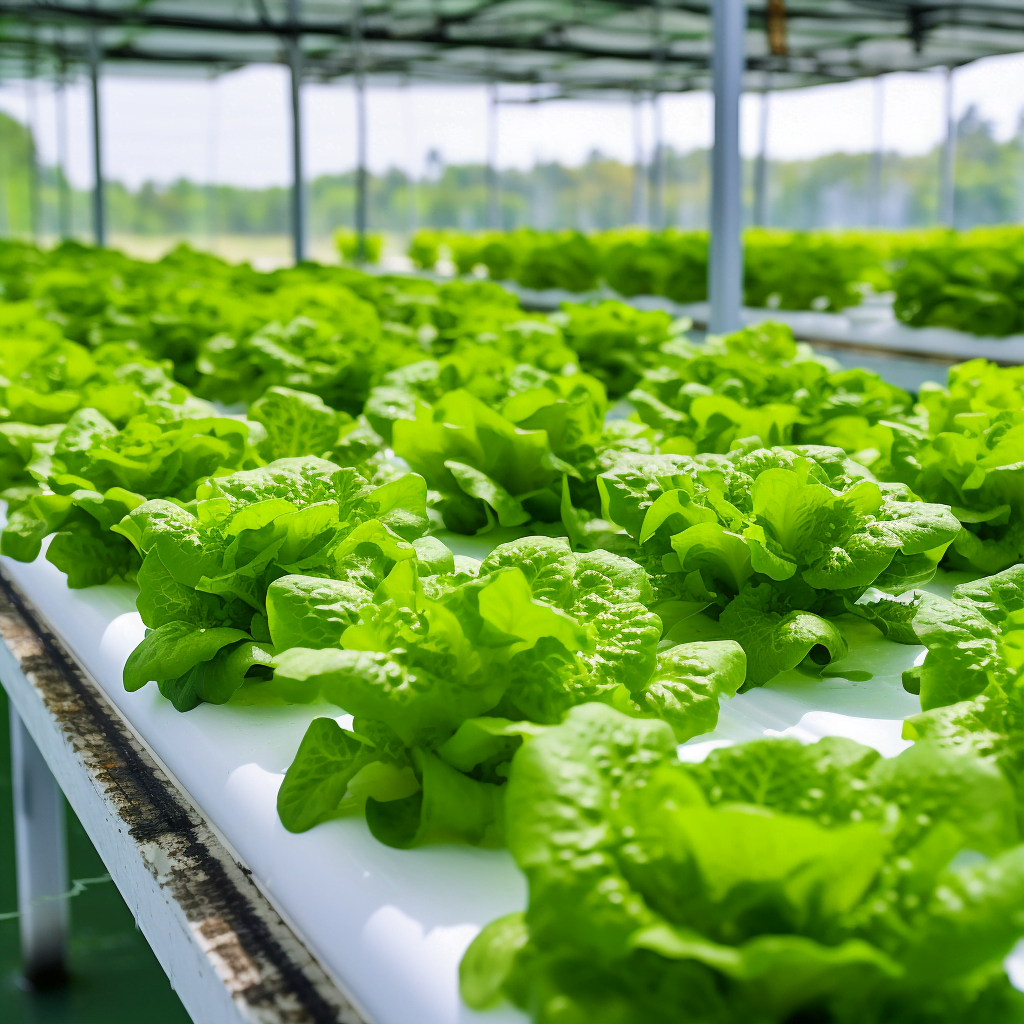
How Hydroponics is Used to Grow Vegetables
Hydroponics allows the large-scale commercial production of vegetables globally. It is also used by small local farms to supply fresh produce year-round. Many home gardeners now use small DIY hydroponic setups.
Large-Scale Commercial Hydroponic Greenhouses
Massive hydroponic greenhouse farms can cover 10 acres or more and produce yields per square foot much higher than standard agriculture.
With greenhouse hydroponics, growers have total control over all the variables – lighting, temperature, humidity, pH, nutrients, etc. By optimizing all these conditions, plants grow up to 3x faster than soil farming.
Computer monitoring systems watch oxygen levels, pH fluctuations, nutrient concentrations, light levels, humidity, and more. Data guides growers in managing the ideal environment.
Automated hydroponic greenhouses allow commercial growers to produce consistent, hyper-efficient yields. Crops can be grown year-round, even off season. Tomatoes, cucumbers, lettuce greens, peppers, and herbs are the most common vegetables raised in commercial hydroponics.
Some major advantages of commercial hydroponic vegetable greenhouses:
- Year-round production independent of climate or season
- 2-3x faster growth rates maximize turnover
- Higher crop yields per square foot compared to soil
- Précise control over nutrients, light, humidity, etc.
- Elimination of pests/diseases related to soil pathogens
- Reduced water usage compared to traditional irrigation
Large-scale hydroponic farming does have high startup construction costs. But the ability to maximize yields from smaller spaces makes it a profitable long-term investment.
Local Hydroponic Farms for Restaurants and Markets
In addition to massive commercial greenhouse operations, smaller local hydroponic farms are sprouting up across the world. These independent hydroponic growers help meet the rising demand for fresh, locally-grown produce.
Local hydroponic farms typically range from 1-5 acres. They supply fresh vegetables for restaurants, schools, food services, farmer’s markets, and direct-to-consumer sales in their region. Though smaller than commercial greenhouses, they utilize the same technology of controlled hydroponic systems.
Some advantages of local hydroponic farms include:
- Year-round vegetable production, no matter the climate
- Deliver ultra-fresh produce to restaurants and markets
- Higher yields from small areas allow urban farming
- Require less water than traditional agriculture
- Eliminate need for chemical pesticides/fungicides
- Reduce food miles compared to imported produce
Urban hydroponic farms are expanding access to produce in cities where land is scarce. Roof-top greenhouses maximize growing space. Local hydroponics also cuts down on transport miles to deliver fresher, more nutritious vegetables.
Home Hydroponic Vegetable Gardening
Hydroponics has expanded from commercial farms to home food gardens. Affordable DIY hydroponic systems are simple to construct even in a basement or garage.
Advantages of home hydroponic gardening include:
- Grow vegetables indoors or in small spaces
- Grow year-round regardless of outdoor climate
- Achieve faster growth and higher yields
- Precisely control nutrients and conditions
- Reduce water usage significantly
- Eliminate soil-borne plant diseases
While commercial systems cost thousands, home hydroponic systems cost as little as $50 to get started. Beginners can purchase complete hydroponic growing kits that include all necessary equipment and supplies.
Some vegetables commonly grown with home hydroponic setups include lettuce, tomatoes, peppers, cucumbers, herbs, strawberries, green beans, and peas. Leafy greens like lettuce and spinach are especially productive and easy hydroponic crops for first-timers.
The Benefits of Hydroponically Grown Vegetables
There are many clear advantages to using hydroponics technology for vegetable production versus standard soil farming:
Faster Growth Rates
Plants grow 2-3 times faster with hydroponics compared to soil. Growth rates with hydroponics are accelerated by:
- Constant availability of nutrient solution for roots
- Ability to perfect variables like nutrients, air, lighting, humidity
- Lack of soil-borne pests and diseases
Faster maturity rates allow more production cycles per year. Hydroponically grown vegetables can go from seed to harvest in 2/3 the normal time.
Higher Crop Yields
Hydroponic systems take up much less space than soil farming for equivalent yields. Growers can produce higher crop yields from smaller production areas.
In the space a soil farmer can produce 1 lb of tomatoes, a hydroponic farmer can yield 3-4 lbs!
Factors like vertical stacking, faster growth, and year-round production increase total output. Hydroponics offers 10-20 times the produce per acre compared to traditional farming.
Year-Round Production
Soil farming relies on suitable outdoor climates, but hydroponics allows year-round cultivation. Indoor hydroponic facilities allow growers to control all environmental factors regardless of season or weather.
Crops can be grown consistently 12 months a year. This allows meeting consumer demand even when locally grown produce is out of season. Hydroponics eliminates interruptions to supply chains.
Precise Control Over Conditions
Every variable can be perfectly controlled in hydroponics for ideal growing circumstances. These include:
- Nutrient levels
- pH
- Light duration & intensity
- Air circulation
- Humidity
- Temperature
- Oxygenation
- CO2 supplementation
Monitoring systems watch conditions constantly. Adjustments optimize the environment to accelerate growth. Automation maintains ideal levels 24/7.
Reduction in Water Usage
Hydroponics uses 90% less water than soil-based farming. There is no irrigation runoff or evaporation from the soil. Recirculating systems reuse any excess nutrient solutions.
As water scarcity increases globally, hydroponics offers huge water savings. Closed-loop hydroponics is considered a sustainable, “green” technology.
Elimination of Soil-Borne Pests and Diseases
Growing in sanitized mediums eliminates many common plant pests and diseases related to soil. This reduces pesticide usage. Hydroponically grown vegetables are generally pesticide-free.
Without soil, problems like nematodes, fungi, and bacterial wilt are avoided. Hydroponic vegetable products have longer shelf lives.
Differences Between Hydroponic and Soil Grown Vegetables
While hydroponically grown vegetables are nutritionally equivalent, there are some notable differences from soil grown produce:
Faster Maturation Time
The accelerated growth in hydroponics means faster maturation. Vegetables reach harvest size 20-25% quicker than soil farming. More production cycles are possible per year.
Flavor/Taste Differences
Many people find the taste and flavor superior with hydroponically grown vegetables. The controlled high-mineral environment and faster growth seem to intensify flavors. Tomatoes and leafy greens are especially flavorful.
However, some claim soil-grown crops have more complex, nuanced flavors from soil microbes. Preference varies by individual.
Higher or More Consistent Nutrient Levels
Plants absorb the mineral nutrients they need more efficiently from hydroponic solutions. Nutrient levels can be slightly higher, especially with elements like calcium, iron, potassium, and magnesium.
Testing shows hydroponic and soil vegetables have comparable nutritional values overall. But hydroponic plants take up minerals in a more consistent, controlled way.
Lower Microbial Diversity
Hydroponics lack the rich microbial life of organic soil. There are tradeoffs between soils biological complexity versus a sterile hydroponic system.
However, some growers are experimenting with introducing beneficial bacteria and fungi into hydroponic mediums. This combines the best of both worlds.
Appearance Differences
Some minor appearance differences can occur like smaller, paler potatoes. Leafy greens grow with less carotenoid pigments resulting in paler leaves. More greenhouse shade results in longer lettuce heads.
But overall, hydroponic vegetables are visually very similar to traditionally grown produce. Flavor and texture differences have a larger impact.
Common Hydroponic Vegetables
Many types of vegetables that families consume daily are well suited to hydroponic cultivation:
Leafy Greens – Lettuce, spinach, kale, arugula, chard and other greens thrive with hydroponics. Their fast growth and shallow roots are ideal for nutrient film technique systems. Leafy greens are the #1 home hydroponic crop.
Tomatoes – Vine-ripened hydroponic tomatoes are prized for their flavor and can be grown year-round. Both cherry and beefsteak tomatoes produce heavily in hydroponic setups.
Cucumbers – Long straight cucumbers grow well suspended in hydroponic systems. Plastic grow bags are also used. Two other vine crops, melons and squash, also do well hydroponically.
Peppers – Chili, bell, and other sweet peppers are productive hydroponic vegetables. Their high vitamin C levels increase with hydroponics. Hot peppers grow especially fast.
Herbs – Basil, mint, parsley, cilantro, dill, oregano, and chives all thrive hydroponically on kitchen windowsills or porches. Home cooks have ultra-fresh herbs on hand.
Strawberries – Towering vertical hydroponic strawberry systems allow growing loads of berries in limited space both indoors and out. Ever-bearing varieties produce for months.
Radishes & Sprouts – Fast-growing radishes and vegetable sprouts like broccoli or alfalfa are easy hydroponic crops using trays or jars. Great for kids’ projects!
Peas & Beans – Vining veggies produce higher yields grown vertically in hydroponic systems versus soil plots. Provide strong trellising for heavy crops.
Potatoes – While potatoes grow well in hydroponics, specialized grow bags are needed. Varieties with shorter vegetation periods are preferred to limit vine overgrowth.
Other Crops – Onions, leeks, brussels sprouts, celery, fennel, okra, eggplant, and broccoli all adapt well to hydroponic systems. Selectcompact, high-yielding varieties.
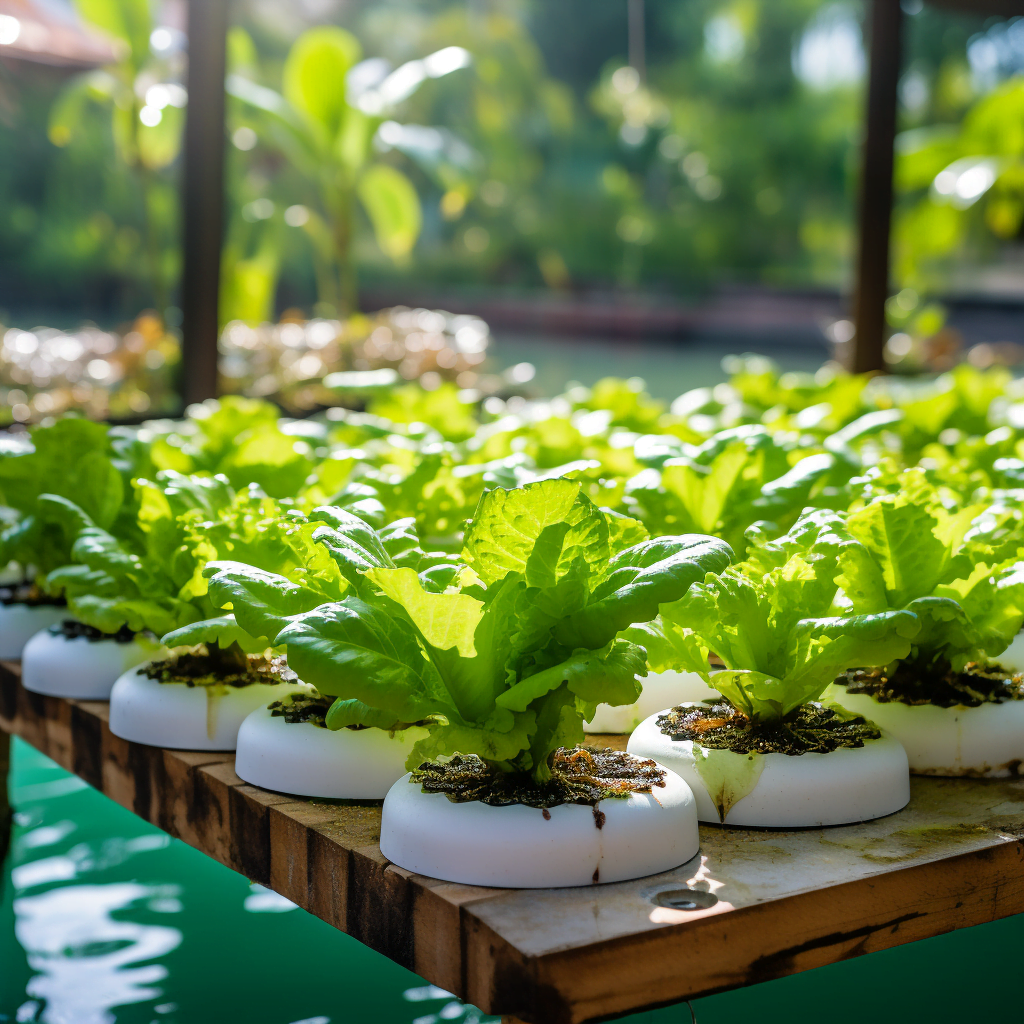
Getting Started Growing Hydroponic Vegetables
For beginners wanting to grow vegetables hydroponically, here are some tips:
Start With a Simple System
For first-timers, choose a basic system like:
- Wick system
- Deep water culture
- Small ebb and flow system
Pre-built kits for these beginner systems provide all needed parts conveniently.
Avoid complex setups like nutrient film technique that require more precision. Wait on DIY systems until gaining experience.
Select an Appropriate Scale
Consider the scale suitable for your space and budget. Options range from:
- A single 5-gallon bucket system on a patio
- A small 4’x8’ home system with 30-50 plants
- Larger 12’x24’ commercial systems holding 200+ plants
Bigger isn’t always better for beginners. Start small and expand over time.
Acquire Necessary Equipment
Typical equipment needs include:
- Containers like buckets, trays, pipes, reservoirs
- Growing media like perlite, coconut coir, gravel
- Pumps, air stones, drip lines, timers, valves
- Lighting for indoor systems
- Humidity & temperature controls
- pH and EC meters
- Seed starters and propagation domes
Quality equipment prevents headaches later. Don’t skimp on key items.
Choose Suitable Vegetables
For first-time growers, it’s best to start with veggie varieties that thrive in hydroponics like:
- Lettuce
- Tomatoes
- Herbs
- Peppers
- Spinach
- Radishes
- Green beans
- Strawberries
Avoid finicky plants until mastering systems. See the list above of top hydroponic crops.
Use Complete Nutrient Solutions
Premixed nutrients tailored for hydroponics take the guesswork out of fertilizing. General purpose mixes work for most vegetable plants.
Two-part formulas keep nutrients separate. Always follow mixing directions. Check that Ca, Mg and micronutrient levels look sufficient.
Monitor Conditions Closely
Check plants daily for any signs of stress or pests. Make sure lighting, humidity, and temperature levels are in suitable ranges for plants.
Keep nutrient solutions aerated and watch for pH fluctuations. Top off water levels as needed. Address any issues immediately before they escalate.
FAQs About Hydroponically Grown Vegetables
Why choose hydroponics over soil grown vegetables?
Advantages of hydroponics include faster growth, higher yields, superior taste, year-round production, precise control over nutrients/conditions, reduced water usage, and elimination of soil pests.
What nutrients are used in hydroponic systems?
Instead of soil, hydroponic solutions contain all the macronutrients (Nitrogen, Phosphorus, Potassium, Calcium, Magnesium, Sulfur) and micronutrients (Iron, Boron, Manganese, Zinc, Copper, Molybdenum, Chloride) that plants need.
Is it expensive to start hydroponic gardening?
Small home systems can be started for $50-$200 but larger commercial systems cost much more. Ongoing costs are reasonable if reusing nutrient solution.
DIY systems made from scrap materials can be ultra-cheap to build. But purchasing high quality equipment is worth the investment long-term.
What are the best vegetables for hydroponic growing?
Lettuces, leafy greens, tomatoes, cucumbers, peppers, strawberries, herbs, radishes, green beans, and peas are some of the top vegetables suited to hydroponic cultivation.
Is it difficult for beginners to grow hydroponically?
Hydroponics has a learning curve. But starting with a simple, small system makes it quite achievable even for total beginners. Following instructions and monitoring conditions closely prevents many issues.
Do hydroponic vegetables taste as good as soil grown?
Opinions vary, but many believe hydroponic vegetables taste equal or better. The controlled high-mineral environment may enhance flavor in some crops like tomatoes and greens.
Can any plant be grown hydroponically?
While the vast majority adapt well, some crops are still better suited to soil. Root crops like potatoes, carrots, beets have challenges. Large fruiting plants also require more space.
Conclusion
In summary, hydroponic vegetable production offers many advantages over conventional soil farming. The ability to perfectly control all growing factors results in faster maturation, higher yields, year-round production, superior produce, and huge water savings versus traditional irrigation.
Both large-scale commercial growers and home gardeners can benefit from implementing hydroponics. With affordable equipment and nutrient solutions, hydroponic gardening is an excellent way to sustainably grow vegetables anywhere.
This overview covers the key types of hydroponic systems, main growing methods, benefits and drawbacks, suitable crops, and how to get started. Hydroponics is the future of efficient, productive food production.
